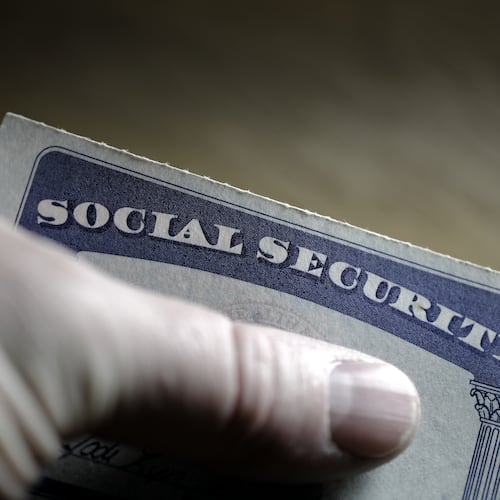TULSA, Okla. — President Joe Biden led a remembrance Tuesday of one of the nation’s darkest — and long suppressed — moments of racial violence, marking the 100th anniversary of the destruction of a thriving Black community in Tulsa.
Watch a replay of President Joe Biden’s speech honoring victims of the Tulsa Race Massacre:
Biden helped commemorate the deaths of hundreds of Black people killed by a white mob a century ago, his visit coming amid a national reckoning on racial justice. The events stood in stark contrast to then-President Donald Trump’s trip a year ago, which was greeted by protests.
Biden is the first president to participate in remembrances of the destruction of what was known as “Black Wall Street.” In 1921 — on May 31 and June 1 — when a white mob, including some people hastily deputized by authorities, looted and burned the Greenwood district.
The president, joined by three top Black advisers, met privately with three surviving members of the Greenwood community who lived through the violence, the White House said. Viola “Mother” Fletcher, Hughes “Uncle Red” Van Ellis and Lessie “Mother Randle” Benningfield Randle are all between the ages of 101 and 107.
Outside, Latasha Sanders, 33, of Tulsa brought her five children and a nephew in hopes of spotting Biden.
“It’s been 100 years, and this is the first we’ve heard from any U.S. president,” she said. “I brought my kids here today just so they could be a part of history and not just hear about it, and so they can teach generations to come.”
As many as 300 Black Tulsans were killed, and thousands of survivors were forced for a time into internment camps overseen by the National Guard. Burned bricks and a fragment of a church basement are about all that survive today of the more than 30-block historically Black district.
During Tuesday’s meeting, Biden conveyed “his heartfelt gratitude for their bravery in sharing the stories of the trauma and violence that was wrought on them and their families,” White House principal deputy press secretary Karine Jean-Pierre said.
Biden also explained “that we need to know our history from the original sin of slavery, through the Tulsa Race Massacre to racial discrimination and housing in order to build common ground, to truly repair and rebuild,” she said.
Several hundred people milled around Greenwood Avenue in front of the historic Vernon African Methodist Episcopal Church awaiting Biden’s arrival at the nearby Greenwood Cultural Center. Some vendors were selling memorabilia, including Black Lives Matter hats, shirts and flags under a bridge of the interstate that cuts through the district.
The names and pictures of Black men killed by police hung on a chain-link fence next to the church, including Eric Harris and Terrence Crutcher in Tulsa.
Inside the community center, Biden was joined by Housing Secretary Marcia Fudge and senior advisers Susan Rice and Cedric Richmond. Biden peered at photos of Black-owned businesses destroyed in the riot and asked questions of his tour guide, who at one moment told the president, “It was a massacre.”
America’s continuing struggle over race will continue to test Biden, whose presidency would have been impossible without overwhelming support from Black voters, both in the Democratic primaries and the general election.
Biden has pledged to help combat racism in policing and other areas of life following nationwide protests after George Floyd’s death a year ago that reignited a national conversation about race. Floyd, a Black man, was killed by white Minneapolis Police Officer Derek Chauvin, who pressed his knee on Floyd’s neck for more than nine minutes.
After Chauvin was convicted in April, Biden said the country’s work was far from finished with the verdict, declaring, “We can’t stop here.”
He called on Congress to act swiftly to address policing reform. But he has also long projected himself as an ally of police, who are struggling with criticism about long-used tactics and training methods and difficulties in recruitment.
The Tulsa massacre has only recently entered the national discourse — and the presidential visit put an even brighter spotlight on the event.
About the Author
The Latest
Featured







